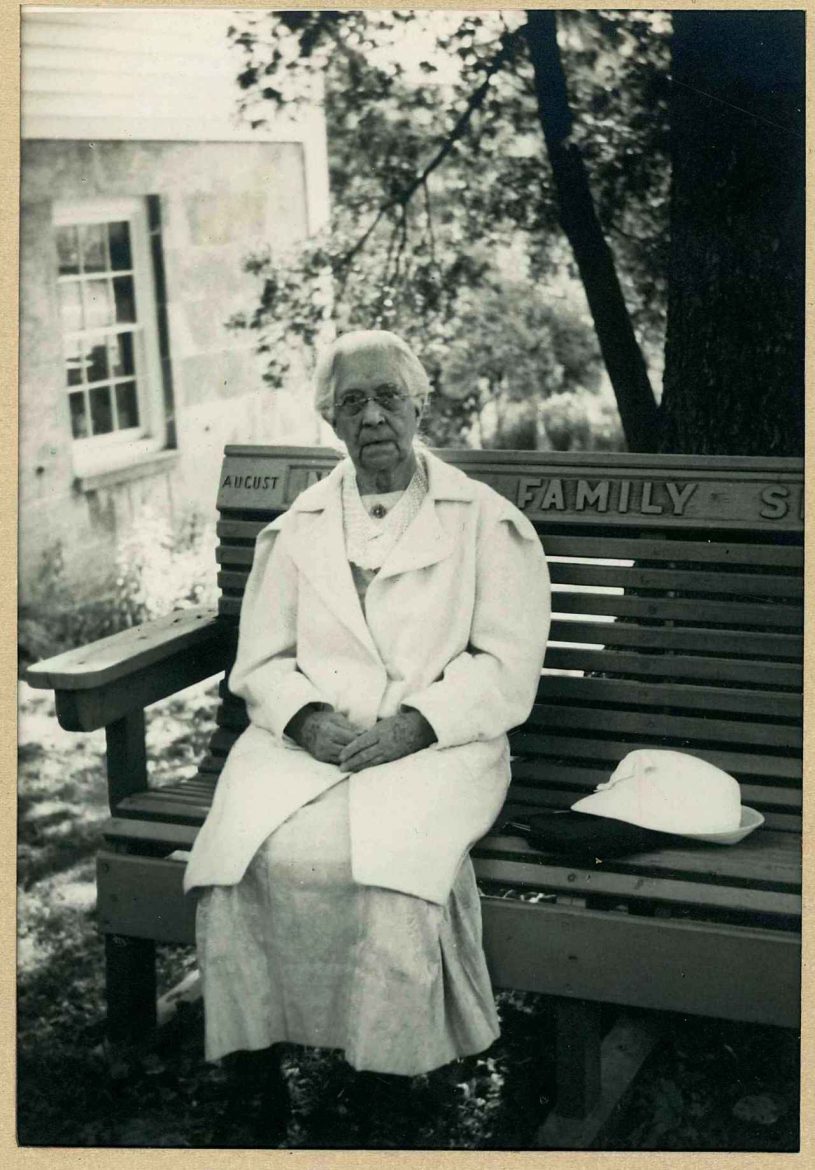
We recently wrote about a lawn bench in the Museum’s collection. Carved on its back rail is, “August | North Family Shakers | 1914.” It was located in the yard between the North Family’s First Dwelling and the Sisters’ Workshop facing uphill to the public road. In the post we included a photograph of Sister Sadie Maynard standing behind the bench. Since then we […]

Photograph, Eldress Annie Rosetta Stephens, North Family, Mount Lebanon, NY, Ca. 1915, Shaker Museum | Mount Lebanon
We recently wrote about a lawn bench in the Museum’s collection. Carved on its back rail is, “August | North Family Shakers | 1914.” It was located in the yard between the North Family’s First Dwelling and the Sisters’ Workshop facing uphill to the public road. In the post we included a photograph of Sister Sadie Maynard standing behind the bench. Since then we received a gift of a collection of materials that had come from the North Family through the donor’s mother-in-law’s great grandmother, Margaret Fyfe (Fife in Shaker journals), including a photograph of Eldress Annie Rosetta Stephens seated on the same bench. It is rare to have Shaker-era photographic documentation of pieces from the Museum’s collection. To have two such images is quite remarkable.
Eldress Annie Rosetta Stephens was one of the first converts resulting from Elder Frederick W. Evans’s 1871 lecture tour in England. Sister Rosetta’s father, a designer of paisley shawls and a weaver who was one of the founders of the Humanitarian Brotherhood, was apparently very receptive to the American communist who had come to lecture in London – enough so to send his 11-year old daughter to America with the elder. When the “Atlantic” docked in New York and Elder Frederick disembarked, by his side was little Annie who became and remained a Shaker her whole life.
Margaret Fyfe, who either took or was given the photograph, first came to the Shakers at the North Family with Amanda Deyo, a Universalist minister, vice-president of the Universal Peace Union, and a prime mover in the annual peace convention held in Wiley’s Grove near Salt Point, Dutchess County, NY – a meeting the Shakers attended. Margaret boarded with the North Family from early spring through late fall each year from 1910 until about 1920. She was enough of a consistent presence during those years to be noted as “Sister Margaret” on occasion in one family diary.